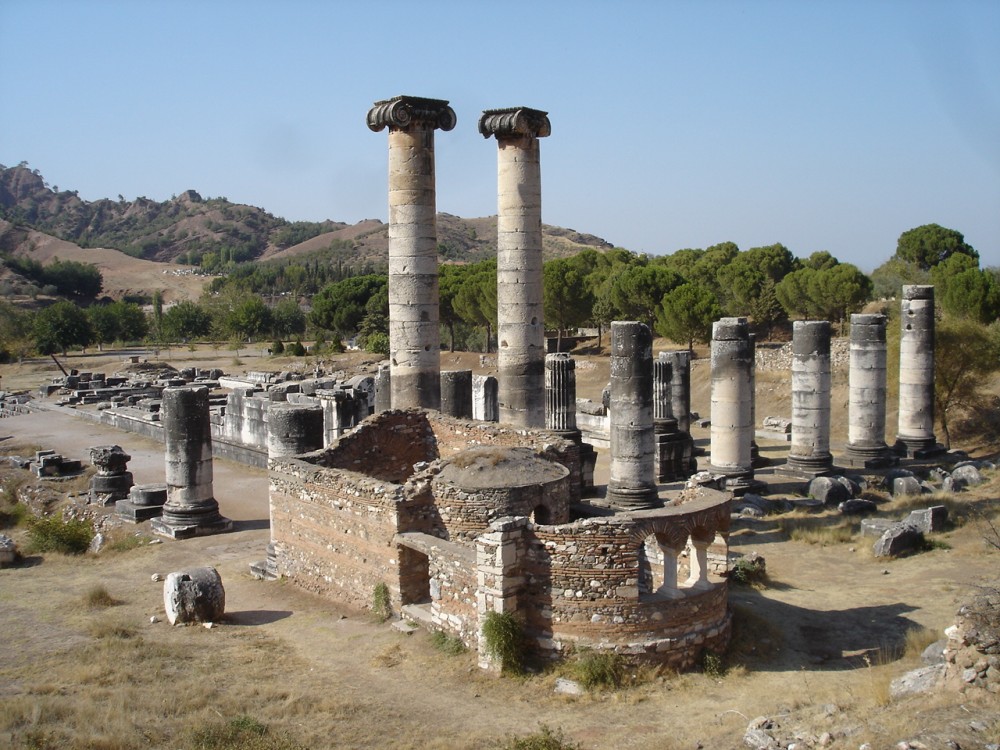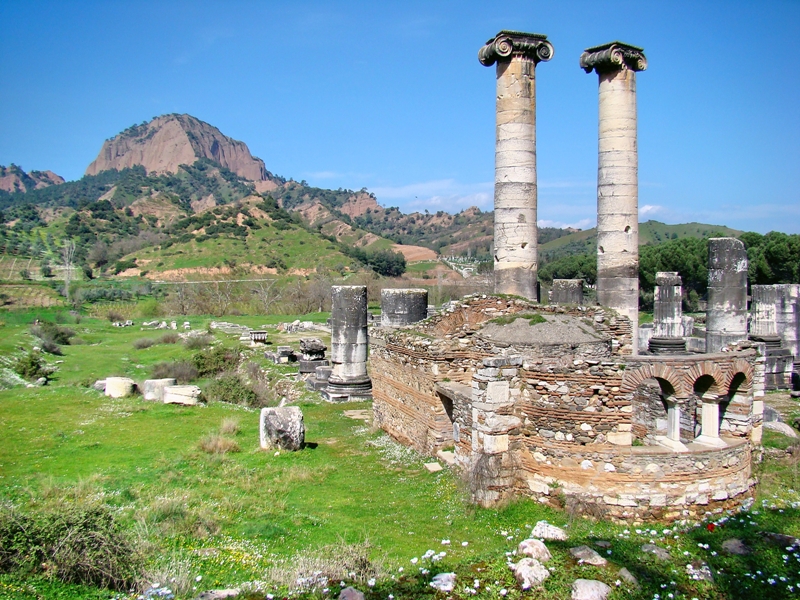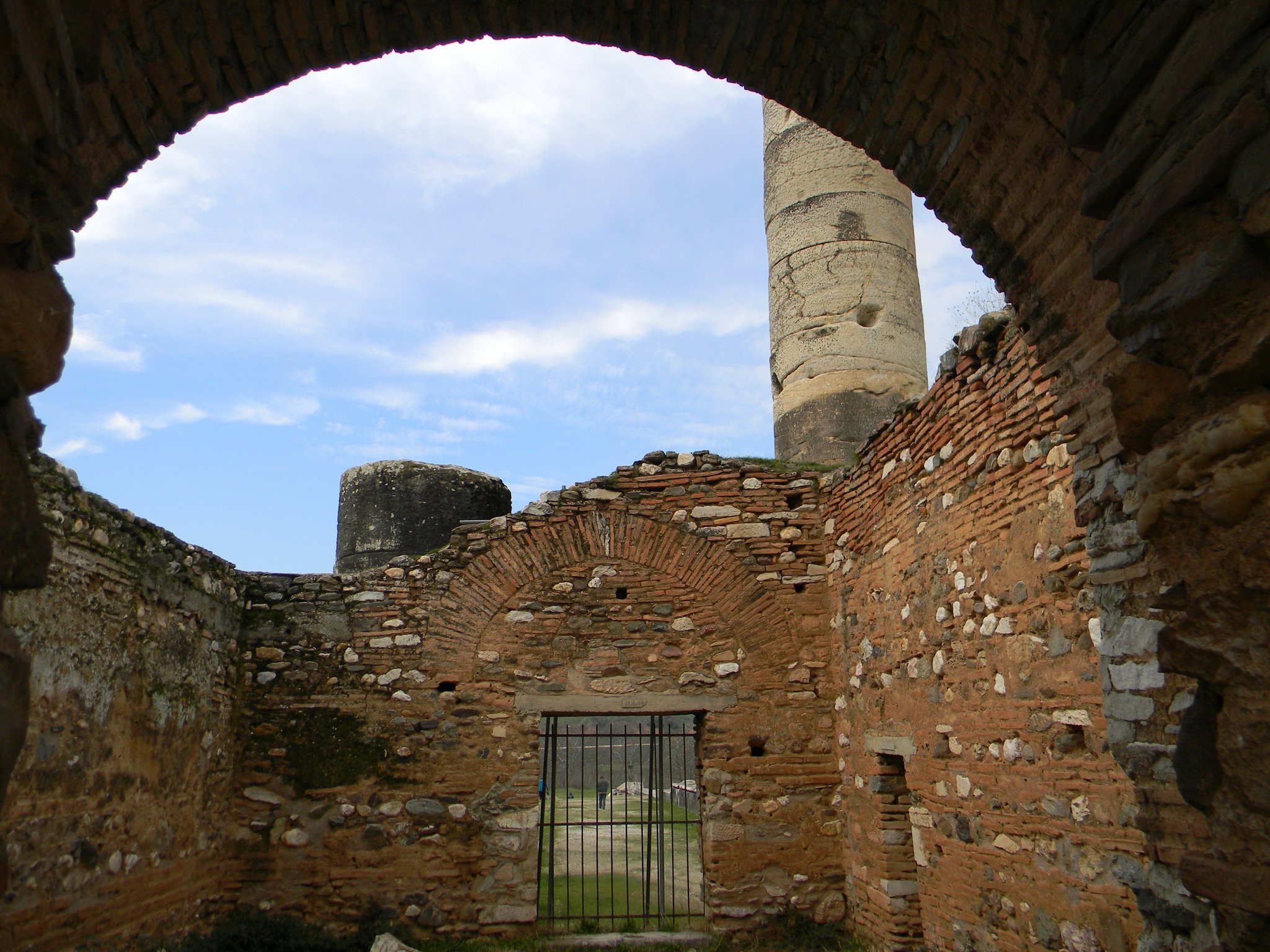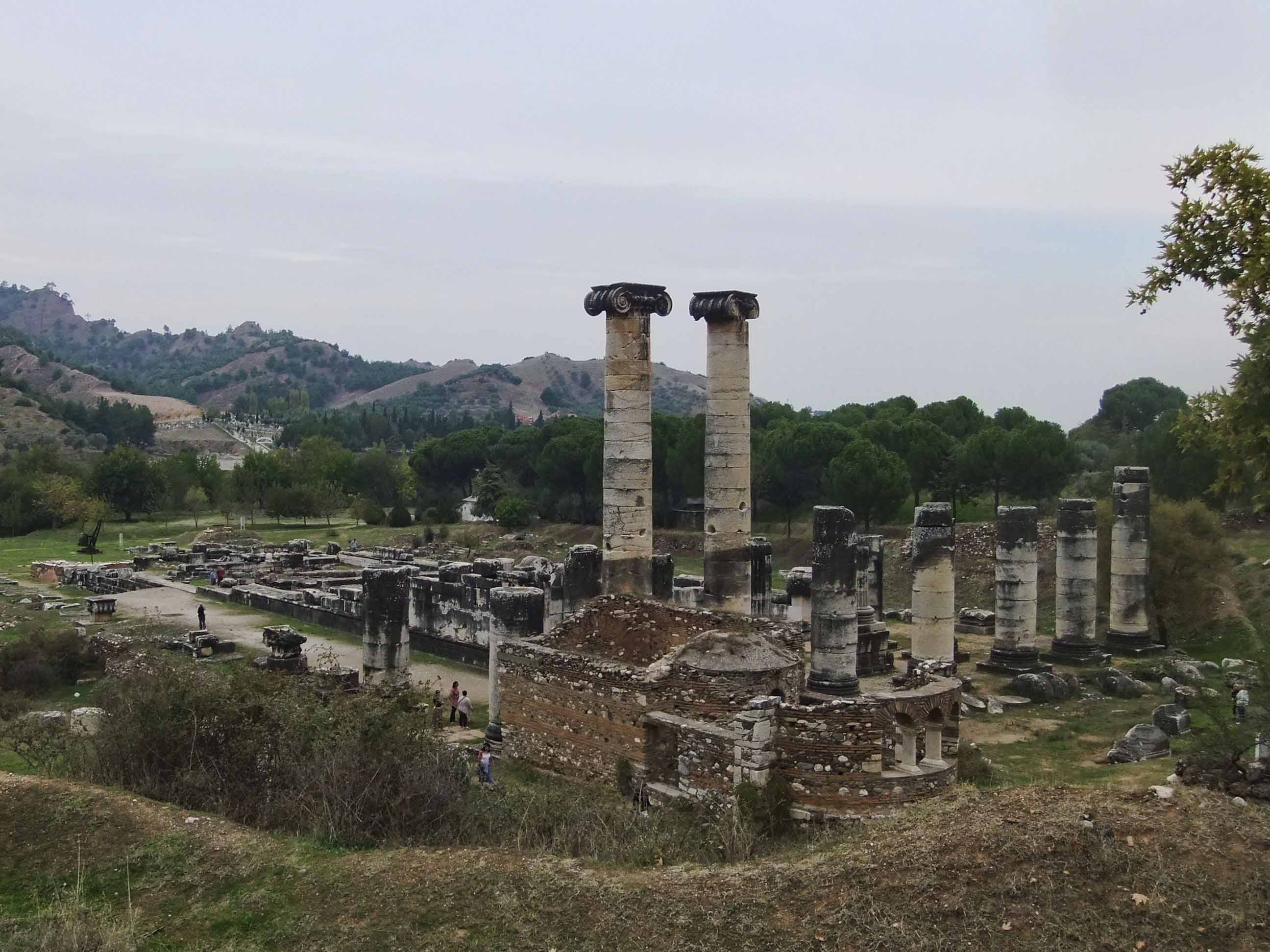





Church of Sardis – The Dead Church
5. The Church of Sardis- Rev 3:1 -6
Rev 3:1 "To the angel of the church in Sardis write: These are the words of him who holds the seven spirits of God and the seven stars. I know your deeds; you have a reputation of being alive, but you are dead.
Rev 3:2 Wake up! Strengthen what remains and is about to die, for I have found your deeds unfinished in the sight of my God.
Rev 3:3 Remember, therefore, what you have received and heard; hold it fast, and repent. But if you do not wake up, I will come like a thief, and you will not know at what time I will come to you.
Rev 3:4 Yet you have a few people in Sardis who have not soiled their clothes. They will walk with me, dressed in white, for they are worthy.
Rev 3:5 The one who is victorious will, like them, be dressed in white. I will never blot out the name of that person from the book of life, but will acknowledge that name before my Father and his angels.
Rev 3:6 Whoever has ears, let them hear what the Spirit says to the churches.
Rev 3:1 "To the angel of the church in Sardis write: These are the words of him who holds the seven spirits of God and the seven stars. I know your deeds; you have a reputation of being alive, but you are dead.
Rev 3:2 Wake up! Strengthen what remains and is about to die, for I have found your deeds unfinished in the sight of my God.
Rev 3:3 Remember, therefore, what you have received and heard; hold it fast, and repent. But if you do not wake up, I will come like a thief, and you will not know at what time I will come to you.
Rev 3:4 Yet you have a few people in Sardis who have not soiled their clothes. They will walk with me, dressed in white, for they are worthy.
Rev 3:5 The one who is victorious will, like them, be dressed in white. I will never blot out the name of that person from the book of life, but will acknowledge that name before my Father and his angels.
Rev 3:6 Whoever has ears, let them hear what the Spirit says to the churches.




Sardis. Artemis Temple and 5th century A.D. Church.
I did a thorough search on the internet for pictures of the ruins of the Church of Sardis and the only images that came up was pictures of the Temple of Artemis but it also shows a small church that is believed to be a Christian church located at the lower corner of the temple. Listed below is some of the information I found on the temple and small church.
The pictures show the ruins of the Temple of Artemis where the fertility goddess Cybele was worshiped in the ancient city of Sardis (present day Turkey). Worship in the cult of fertility gods and goddesses was often scandalous, involving temple prostitution and the ritual castration of male priests who would offer their own source of fertility to the goddess as an act of devotion. This was a dark, dark place. This was the sort of place you’d expect early followers of Jesus to protest, but it has been told that the small building near the pillars is actually one of the oldest Christian churches ever to be found in Asia.
It is not known what those Christians did there, but it is likely that they were intentionally setting up camp in one of the darkest places in their neighborhood in order to be a presence of light. That their experience of wholeness sent them in search of the most fragmented peoples, places and issues in order to call forth the “hidden wholeness” of all things.
The Temple of Artemis was “twice” as large as the Parthenon in Athens and was considered one of the seven largest Greek temples when it was first built in 334 BC. This was right after Sardis was liberated by Alexander the Great. As Artemis was the main goddess of fertility, the hunt, children and animals, people came from far and wide to worship in the mammoth 300’x150’ temple. In Roman times, Artemis became known as Diana, daughter of Zeus and twin of Apollo. There is proof that Artemis was worshiped as early as the 6th century BC as there was a free standing altar of Artemis.
As with all of history due to wars, earthquakes, and other acts of men and God, the construction began and halted many times. Main construction resumed around 175 BC and was then again abandoned. This was followed by much damage from the earthquake of 17 AD. Finally, the most impressive age of construction started during the Roman period about 150 AD.
History and background of Sardis
The city of Sardis is about 30 miles southeast of Thyatira and 50 miles due east of Smyrna. The original city of Sardis sets 1,500 feet above sea level, on a plateau overlooking a large valley at the western end of the Great King's highway from Susa. At the foot of that hill were the temples of Artemis and Zeus. In ancient times, because it was only assessable from the narrow neck of land from the south, the city was considered essentially impregnable and easily defended. Hence it became the capital of the kingdom of Lydia. It enjoyed not only political influence but economic prosperity in harvesting wool and dying it, which was very lucrative during ancient times.
In view of Sardis’ location and natural protections, the people of Sardis considered the city impregnable. They felt so secure that their guard was not always up in time of crisis. History reveals that the city was conquered without resistance by both Cyrus and Antiochus, and in this lies a spiritual lesson. In its opening address, the letter to Sardis says, "I know thy works, that thou hast a name that thou livest, and art dead" (Revelation 3:1).
The Problem of the Church
What was the problem of Sardis? The Church of Sardis was different from all of the other churches. This church did not have problems with persecution (from either the Jews or the Romans). It did not have problems with false teachers. There is no mention of the Balaam, Jezebel or the Nicolaitans in this church. Instead, it had a more serious problem. It was dead . Jesus did not say that the church is sick. He does not say that the church is weak. He said that it was dead. It was the church of the living dead. They probably thought their church was alive. Other people may have thought the church was alive, since it had a great reputation. They may have thought it was a great church but Jesus said it was dead.
A dead church may have had some great music. It may have a great church building (a magnificent cathedral with a fancy organ) but, in a dead church, there are dead men in the pulpit and dead men in the pews. There were dead men preaching delivering dead sermons. The worship leaders were dead and all the worshippers are dead, not physically dead but spiritually dead. Some churches are living corpses and God is not working there.
It is not enough to have a good reputation. Reputation is not always the same thing as reality. Outward appearances can be deceiving. Jesus said that the Pharisees looked great on the outside but terrible on the inside (Matthew 23:27-29). A reputation is just what other people think of you. The real question is not what others think of you or your church but what Jesus thinks of it. People look at the outward appearance, but the LORD looks at the heart”.
Promises to the Church at Sardis
Jesus gives three promises to the faithful believers in Sardis.
1) They will walk with Jesus in white.
They will be dressed in white (3:4-5). White was symbolic of many things (purity). The winner of racers often wore a white garment. Sardis was a city that manufactured wool garments.
2) Their name will not be erased from the Book of Life (3:5)
3) Jesus will confess their name to the Father (3:5).
That is not just a promise to Christians in Sardis. It is a promise to all Christians. Jesus said, “Whoever acknowledges me before others, I will also acknowledge before my Father in heaven” (Matthew 10:32).
THE MESSAGE TO THOSE OF SARDIS
The warning to those of Sardis is that they had better quickly wake up to their deadly laziness and idleness, because their salvation is in jeopardy. Christ also warns that within the congregations of Sardis there are only a few who truly love the Father and his Son and are following the ways of God. Jesus encourages these few to continue to be watchful and they will receive their reward.
Christ is telling those of Sardis to think back to when they first heard the truth of God and the Father's good news about his Son and salvation and to remember the time of their spiritual awakening and their repentance and conversion to the son of God.
Jesus quickly and clearly condemns the lifeless state of the Sardian church: “I know your deeds; you have a reputation of being alive, but you are dead” (Revelation 3:2). This church may have had a good reputation, but they were spiritually lifeless. In other words, the church was filled with unsaved people going through the motions of religion. There were many tares among the wheat (Matthew 13:24-30).
Jesus then calls them to repent of their sin: “Wake up! Strengthen what remains and is about to die, for I have not found your deeds complete in the sight of my God. Remember, therefore, what you received and heard; obey it, and repent” (Revelation 3:2-3). To “wake up” means to start paying attention to their need of salvation, to stop being careless about their heart’s condition before God.
Jesus notes the judgment that would take place if they did not repent: “If you do not wake up, I will come like a thief, and you will not know at what time I will come to you” (Revelation 3:3). A dead church, and one unrepentant in its deadness, will be disciplined by Jesus Himself.
The city had been attacked twice because the watchmen on the walls had not seen the enemies scaling the cliffs. Thinking that they were impregnable on the mountaintop led to a deadly complacence. What had happened to the city was happening to the church, and it needed to wake up. The situation was not completely hopeless—if they caught themselves in time, they could strengthen what little remains even though it, too, was at the point of death.
Christ knew all their deeds, and condemned them as far from right in the sight of God. The church may have looked impressive from the outside, but there was no spiritual motivation or power behind its deeds. In letters to the other churches, Christ commended deeds of love, faithfulness, obedience, and perseverance. Sardis, however, had none of these qualities.
Some in the church had proved the genuineness of their faith and love for Jesus by staying spiritually awake and being on guard. They had ‘kept their clothes clean’. They will therefore join Christ in heaven in ‘clothes’ of greater purity; for he himself has cleansed them, made them his own and brought them into his heavenly Father’s presence (4-6).
Make no mistake, only the overcomer will keep their name from being blotted out of the book of life. What a terrible accusation from our Lord and Savior. Those of Sardis have a reputation for being alive; however, they are in fact already spiritually dead.
I did a thorough search on the internet for pictures of the ruins of the Church of Sardis and the only images that came up was pictures of the Temple of Artemis but it also shows a small church that is believed to be a Christian church located at the lower corner of the temple. Listed below is some of the information I found on the temple and small church.
The pictures show the ruins of the Temple of Artemis where the fertility goddess Cybele was worshiped in the ancient city of Sardis (present day Turkey). Worship in the cult of fertility gods and goddesses was often scandalous, involving temple prostitution and the ritual castration of male priests who would offer their own source of fertility to the goddess as an act of devotion. This was a dark, dark place. This was the sort of place you’d expect early followers of Jesus to protest, but it has been told that the small building near the pillars is actually one of the oldest Christian churches ever to be found in Asia.
It is not known what those Christians did there, but it is likely that they were intentionally setting up camp in one of the darkest places in their neighborhood in order to be a presence of light. That their experience of wholeness sent them in search of the most fragmented peoples, places and issues in order to call forth the “hidden wholeness” of all things.
The Temple of Artemis was “twice” as large as the Parthenon in Athens and was considered one of the seven largest Greek temples when it was first built in 334 BC. This was right after Sardis was liberated by Alexander the Great. As Artemis was the main goddess of fertility, the hunt, children and animals, people came from far and wide to worship in the mammoth 300’x150’ temple. In Roman times, Artemis became known as Diana, daughter of Zeus and twin of Apollo. There is proof that Artemis was worshiped as early as the 6th century BC as there was a free standing altar of Artemis.
As with all of history due to wars, earthquakes, and other acts of men and God, the construction began and halted many times. Main construction resumed around 175 BC and was then again abandoned. This was followed by much damage from the earthquake of 17 AD. Finally, the most impressive age of construction started during the Roman period about 150 AD.
History and background of Sardis
The city of Sardis is about 30 miles southeast of Thyatira and 50 miles due east of Smyrna. The original city of Sardis sets 1,500 feet above sea level, on a plateau overlooking a large valley at the western end of the Great King's highway from Susa. At the foot of that hill were the temples of Artemis and Zeus. In ancient times, because it was only assessable from the narrow neck of land from the south, the city was considered essentially impregnable and easily defended. Hence it became the capital of the kingdom of Lydia. It enjoyed not only political influence but economic prosperity in harvesting wool and dying it, which was very lucrative during ancient times.
In view of Sardis’ location and natural protections, the people of Sardis considered the city impregnable. They felt so secure that their guard was not always up in time of crisis. History reveals that the city was conquered without resistance by both Cyrus and Antiochus, and in this lies a spiritual lesson. In its opening address, the letter to Sardis says, "I know thy works, that thou hast a name that thou livest, and art dead" (Revelation 3:1).
The Problem of the Church
What was the problem of Sardis? The Church of Sardis was different from all of the other churches. This church did not have problems with persecution (from either the Jews or the Romans). It did not have problems with false teachers. There is no mention of the Balaam, Jezebel or the Nicolaitans in this church. Instead, it had a more serious problem. It was dead . Jesus did not say that the church is sick. He does not say that the church is weak. He said that it was dead. It was the church of the living dead. They probably thought their church was alive. Other people may have thought the church was alive, since it had a great reputation. They may have thought it was a great church but Jesus said it was dead.
A dead church may have had some great music. It may have a great church building (a magnificent cathedral with a fancy organ) but, in a dead church, there are dead men in the pulpit and dead men in the pews. There were dead men preaching delivering dead sermons. The worship leaders were dead and all the worshippers are dead, not physically dead but spiritually dead. Some churches are living corpses and God is not working there.
It is not enough to have a good reputation. Reputation is not always the same thing as reality. Outward appearances can be deceiving. Jesus said that the Pharisees looked great on the outside but terrible on the inside (Matthew 23:27-29). A reputation is just what other people think of you. The real question is not what others think of you or your church but what Jesus thinks of it. People look at the outward appearance, but the LORD looks at the heart”.
Promises to the Church at Sardis
Jesus gives three promises to the faithful believers in Sardis.
1) They will walk with Jesus in white.
They will be dressed in white (3:4-5). White was symbolic of many things (purity). The winner of racers often wore a white garment. Sardis was a city that manufactured wool garments.
2) Their name will not be erased from the Book of Life (3:5)
3) Jesus will confess their name to the Father (3:5).
That is not just a promise to Christians in Sardis. It is a promise to all Christians. Jesus said, “Whoever acknowledges me before others, I will also acknowledge before my Father in heaven” (Matthew 10:32).
THE MESSAGE TO THOSE OF SARDIS
The warning to those of Sardis is that they had better quickly wake up to their deadly laziness and idleness, because their salvation is in jeopardy. Christ also warns that within the congregations of Sardis there are only a few who truly love the Father and his Son and are following the ways of God. Jesus encourages these few to continue to be watchful and they will receive their reward.
Christ is telling those of Sardis to think back to when they first heard the truth of God and the Father's good news about his Son and salvation and to remember the time of their spiritual awakening and their repentance and conversion to the son of God.
Jesus quickly and clearly condemns the lifeless state of the Sardian church: “I know your deeds; you have a reputation of being alive, but you are dead” (Revelation 3:2). This church may have had a good reputation, but they were spiritually lifeless. In other words, the church was filled with unsaved people going through the motions of religion. There were many tares among the wheat (Matthew 13:24-30).
Jesus then calls them to repent of their sin: “Wake up! Strengthen what remains and is about to die, for I have not found your deeds complete in the sight of my God. Remember, therefore, what you received and heard; obey it, and repent” (Revelation 3:2-3). To “wake up” means to start paying attention to their need of salvation, to stop being careless about their heart’s condition before God.
Jesus notes the judgment that would take place if they did not repent: “If you do not wake up, I will come like a thief, and you will not know at what time I will come to you” (Revelation 3:3). A dead church, and one unrepentant in its deadness, will be disciplined by Jesus Himself.
The city had been attacked twice because the watchmen on the walls had not seen the enemies scaling the cliffs. Thinking that they were impregnable on the mountaintop led to a deadly complacence. What had happened to the city was happening to the church, and it needed to wake up. The situation was not completely hopeless—if they caught themselves in time, they could strengthen what little remains even though it, too, was at the point of death.
Christ knew all their deeds, and condemned them as far from right in the sight of God. The church may have looked impressive from the outside, but there was no spiritual motivation or power behind its deeds. In letters to the other churches, Christ commended deeds of love, faithfulness, obedience, and perseverance. Sardis, however, had none of these qualities.
Some in the church had proved the genuineness of their faith and love for Jesus by staying spiritually awake and being on guard. They had ‘kept their clothes clean’. They will therefore join Christ in heaven in ‘clothes’ of greater purity; for he himself has cleansed them, made them his own and brought them into his heavenly Father’s presence (4-6).
Make no mistake, only the overcomer will keep their name from being blotted out of the book of life. What a terrible accusation from our Lord and Savior. Those of Sardis have a reputation for being alive; however, they are in fact already spiritually dead.











